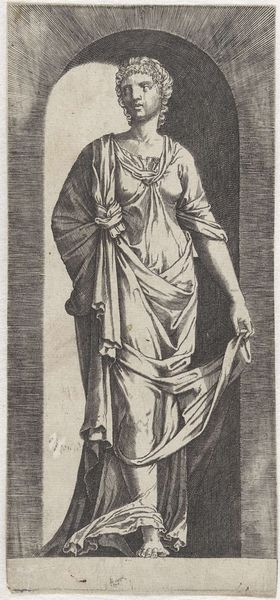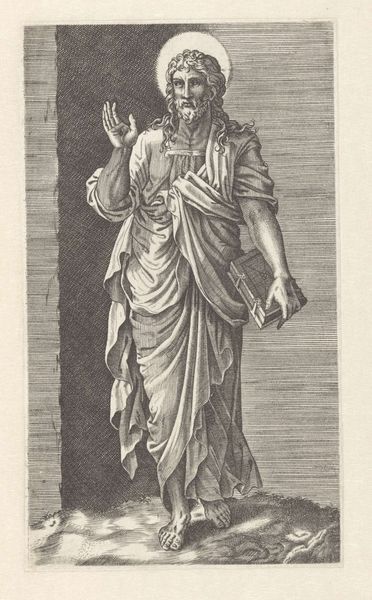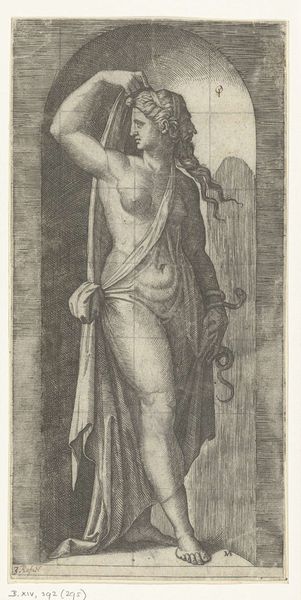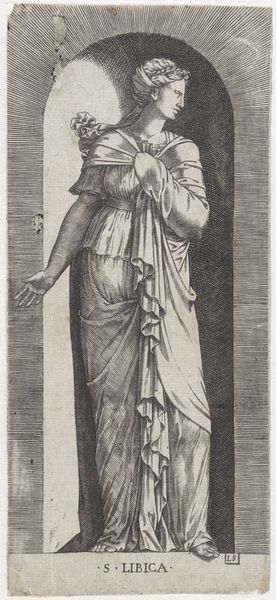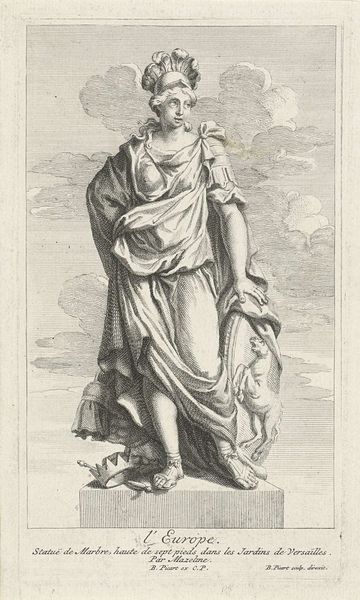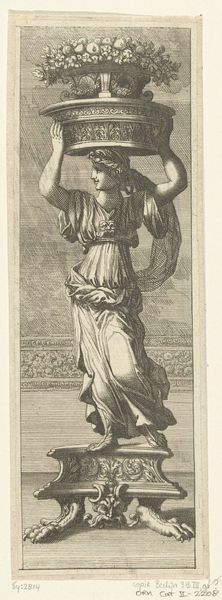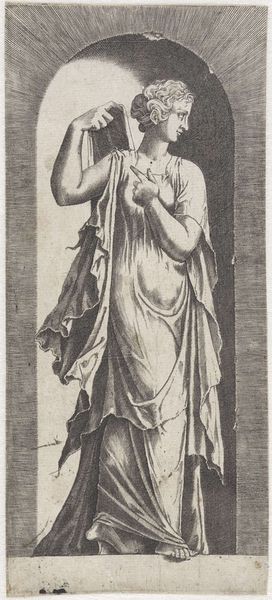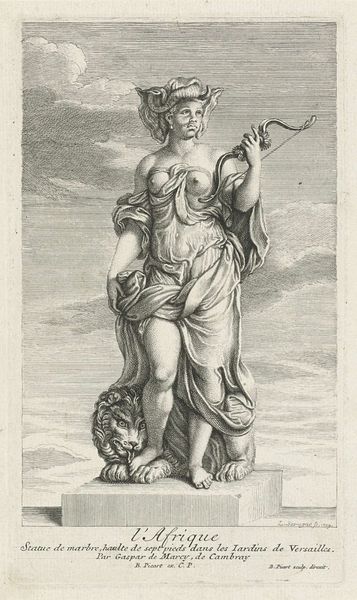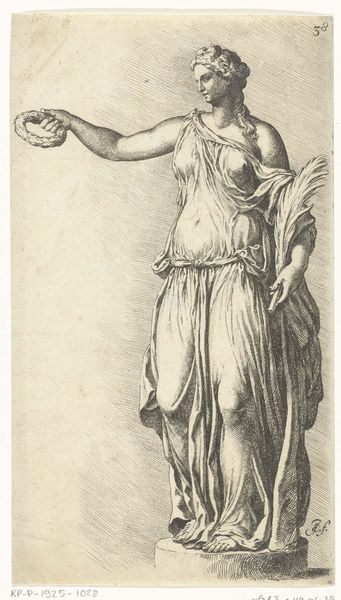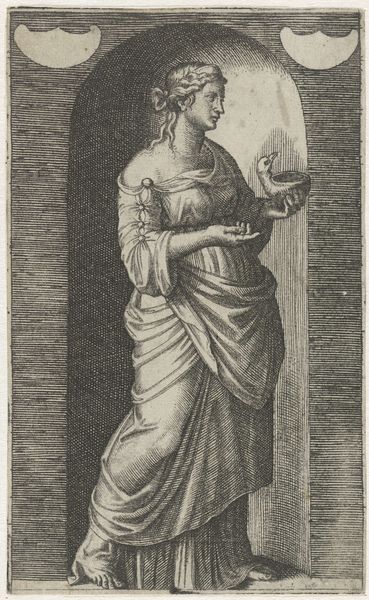
engraving
#
portrait
#
baroque
#
classical-realism
#
figuration
#
line
#
history-painting
#
engraving
Dimensions: height 182 mm, width 113 mm
Copyright: Rijks Museum: Open Domain
Editor: Here we have Jan de Bisschop's "Flora met een bloesemtak in haar hand", dating back to somewhere between 1638 and 1671. It's an engraving. What strikes me is the use of line – the shading, the folds of her garment, all rendered so meticulously. What stands out to you, seeing it with fresh eyes? Curator: The visual harmony achieved through line is certainly noteworthy. Observe how the diagonal hatching creates not just tone, but also directs the eye, emphasizing the form of Flora. How do you perceive the relationship between the figure and the ground? Editor: I find the background a bit…plain? Almost unfinished, which in turn draws the viewer's attention to the details of Flora herself. Is that intentional, do you think? Curator: Precisely. The relative simplicity of the background serves as a foil, enhancing the intricacy of Flora’s draped figure and the delicate blossoms she holds. Consider the linear precision employed in the rendering of her robes—note how the artist masterfully uses varying densities of line to convey volume and texture. Editor: It's amazing how much depth is created using only lines. Curator: Indeed. De Bisschop displays command over his medium, manipulating line weight and direction to define form and establish a subtle contrast between light and shadow. Are you aware of how the composition invites you to read into this classical-realist, baroque style? Editor: It seems self-contained, internal, more concerned with surface and composition than making some grand historical claim. Thank you. I noticed that through how you have unpacked it. Curator: By attending to such pictorial syntax, we sharpen our focus on the intrinsic qualities of the work of art, thus perceiving form over the historical symbolism. Thank you for your thoughtful observation.
Comments
No comments
Be the first to comment and join the conversation on the ultimate creative platform.
